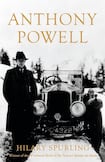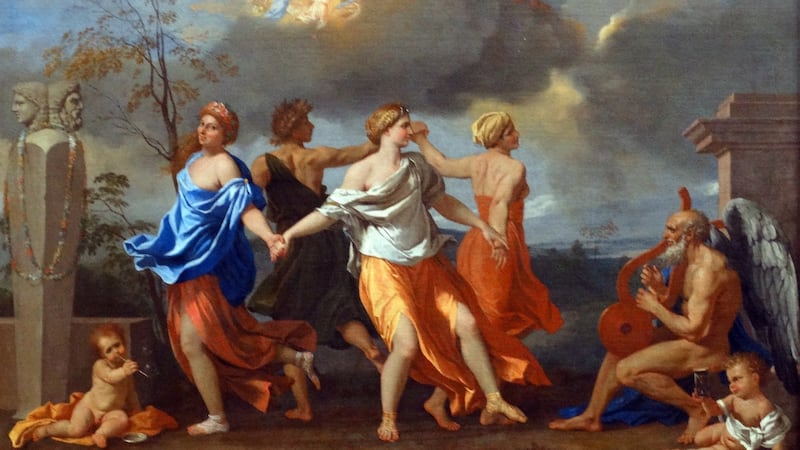
The novelist Anthony Powell is much neglected. His rich 12-novel tapestry A Dance to the Music of Time is an understated comic masterpiece. He records the lives of people who matter, or think they do, from just after the first World War until the 1970s. On the face of it, his characters, most being drawn from the English upper middle class, don't hold much appeal for today's readers, and that's a shame. This biography by a recognised authority on Powell's work is an opportunity to put that right.
In A Dance to the Music of Time, "all human life is there" as the News of the World advertising slogan had it. Everyone has an Uncle Giles. Yours may not be a remittance man, living on cheques from a diminishing family trust. Yours may well rely on social welfare, or an annuity. Under the skin, they are the same. Both share an inordinate welcome for themselves, and can be relied upon to get important stuff wrong. As Uncle Giles confided in the 1930s to anyone who would listen: "I like the little man they have in Germany now".
Powell’s people are everywhere. Once we have learned to look, we see them everywhere. Kenneth Widmerpool for example. On the make, in company board rooms, great ministries of state, charitable foundations. His clones appear briefly on factory floors and in general offices, but they are only passing through. Single-mindedness, greasy officiousness, crafty manipulation, all are grist to the mill in getting to the inner recesses of power. Sadly, the not-for-profit sector, where good intentions provide a convenient shield, attracts more than its fair share of them.

And Jean Duport. Enigmatic, sexy Jean Duport, sister of the narrator’s school friend Peter Templar. The troubling presence who haunted Powell’s imagination for more than 50 years. Being with her is as unsettling as being without her. Yet he knows that in her wake comes trouble. Forgetting her, and moving on, that’s the challenge.
Then there’s Mrs Erdleigh. A rackety sort of woman with a mysterious past. Briefly united with Uncle Giles, she tells narrator Nick Jenkins’s fortune. The cards speak of love. And he falls for Jean Duport. What he doesn’t realise is that the woman he will marry after Jean has vanished will also meet the love of her life, and it won’t be him. Myra Erdleigh is a witch, no mistake, and nowhere in the world is free of witches.
Admittedly the Dance, as aficionados call it, can seem dated in places. As when the daughters of those who matter become "out", that is, launched into society by being presented at court. Beware of debutantes who are "out" for too long and begin to wilt on the vine, unclaimed treasures, for whom some alternative billet must be found. Not to mention "fast" girls, who must be married off quickly lest the worst should happen. This is a world of spare men (to make up the numbers for dinner parties) of "going on" to suppers at Cheyne Walk and to Lady Molly's, and of "afternoon men" who only surface at lunchtime after the previous night's revelries. This rite of passage lives on today in the tamer form of debs' dances.
Powell’s friend and fellow novelist Evelyn Waugh saw the novel sequence this way: “We watch through the glass of a tank; one after another, the various specimens swim towards us; we see them clearly, then with a barely perceptible flick of fin or a tail, they swim off into the murk. This is how our encounters occur in real life. Friends and acquaintances approach or recede year by year. Their presence has no significance. It is recorded as part of the permeating and inebriating atmosphere of the haphazard which is the essence of Mr Powell’s art.”
Powell himself insisted that he was inspired by Nicholas Poussin's painting, A Dance to the Music of Time, and when he was stuck he went to look to London's Wallace collection to look at it. He was also influenced by Marcel Proust. Hilary Spurling opens her authorised biography by reminding us that her subject was an accomplished graphic artist as well as a writer. Her previous book Invitation to the Dance was effectively an index to Powell's characters. Now, she examines his life in detail, showing the intersections between fact and fiction in considerable detail. Powell had a Welsh and military background, and did well at Eton and Balliol College, Oxford, afterwards scraping a living in the rackety underworld of publishing, writers and painters in London and Paris during the two world wars.
Spurling does well in getting between the real-life Powell and his narrator Nick Jenkins, and bringing the reader with her. She tells us about him being sexually educated by an older woman, the “queen of bohemia” Nina Hamnett, writer and artist. He was a quick learner. On a brief visit to the Longford family home in Ireland, he met Violet Pakenham of the multi-stranded, multi-talented Anglo-Irish family, whom he would marry, and seduced writer Mary Manning in the back of a Dublin shop, in short order.
Working with his friend Malcolm Muggeridge as editor, Powell had a good run commissioning articles and cartoons for the British humorous magazine Punch in the 1950s, where he employed Mark Boxer (Marc). His cover illustrations for the Fontana edition of Dance are as near perfection as line drawing gets. Some are recycled for this biography, but they are poorly displayed. I am also incredulous that one has to get to page 241 before encountering an illustration of Poussin's painting, the inspiration of the whole enterprise. What Powell thinks of the these lapses, I shall never know, but if there is another life, I expect he will have reserved a particularly warm spot on the hobs of hell for those responsible.
Overall, Spurling, the author of an acclaimed biography of Matisse, has done well by Powell. She takes us through the life and his many literary friendships, pointing out landmarks and influences which made their way into Dance and his other writings. In dealing with Powell's personal life, she has been a tad too reticent for my liking. A few blots on the copybook would not go amiss.
This publication will, I hope, get more people to enjoy the Dance. New readers, I suggest, should read it as Powell intended, a novel at a time. Have Spurling's Invitation to the Dance on hand to clarify matters such as the links between Matilda Wilson, "Baby" Wentworth, and Lady Anne Umfraville – all mistresses of the industrialist Sir Clive Donners. And finally, Spurling's biography to tie up loose ends. You've a treat in store.
Kieran Fagan’s most recent book was “The Framing of Harry Gleeson”












